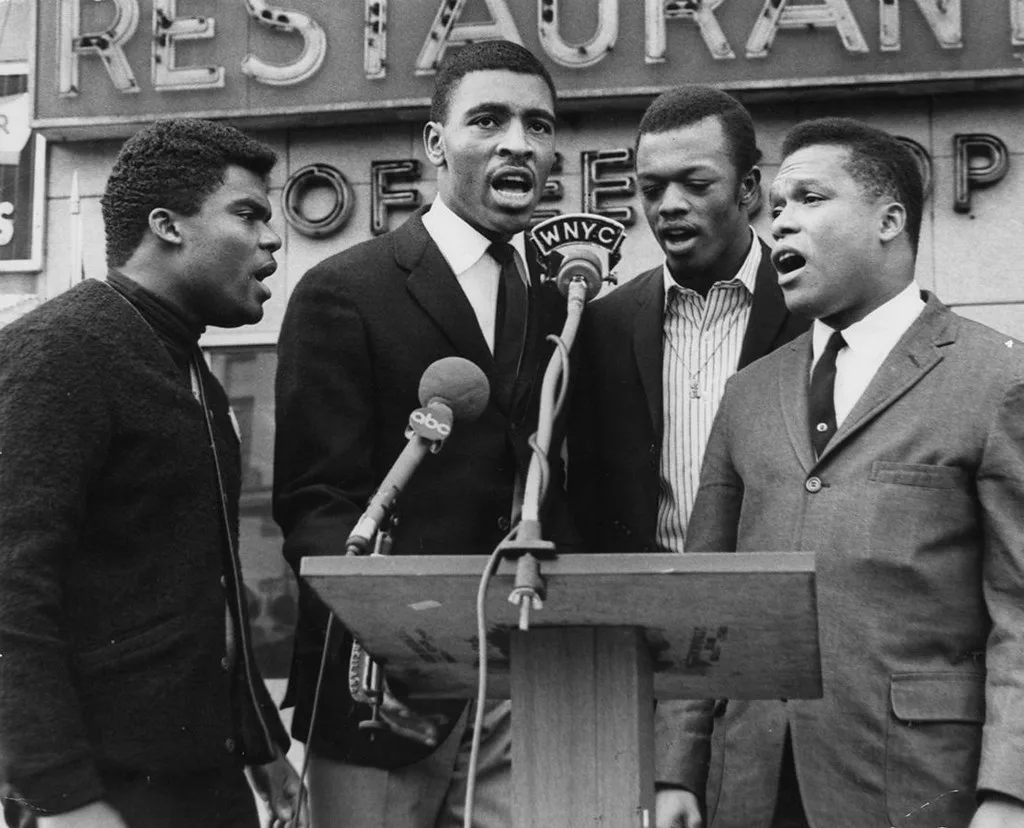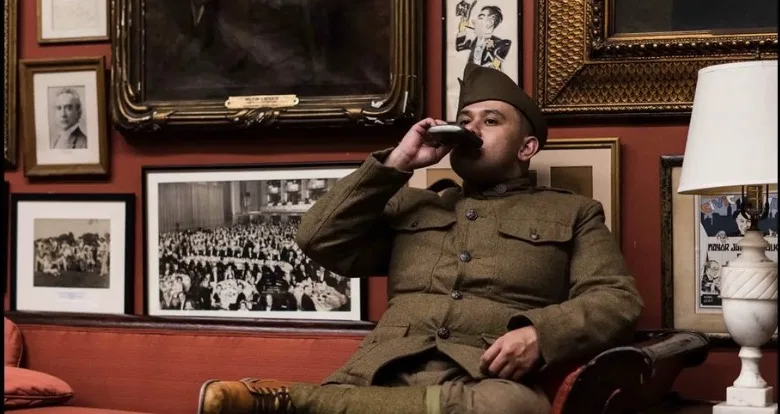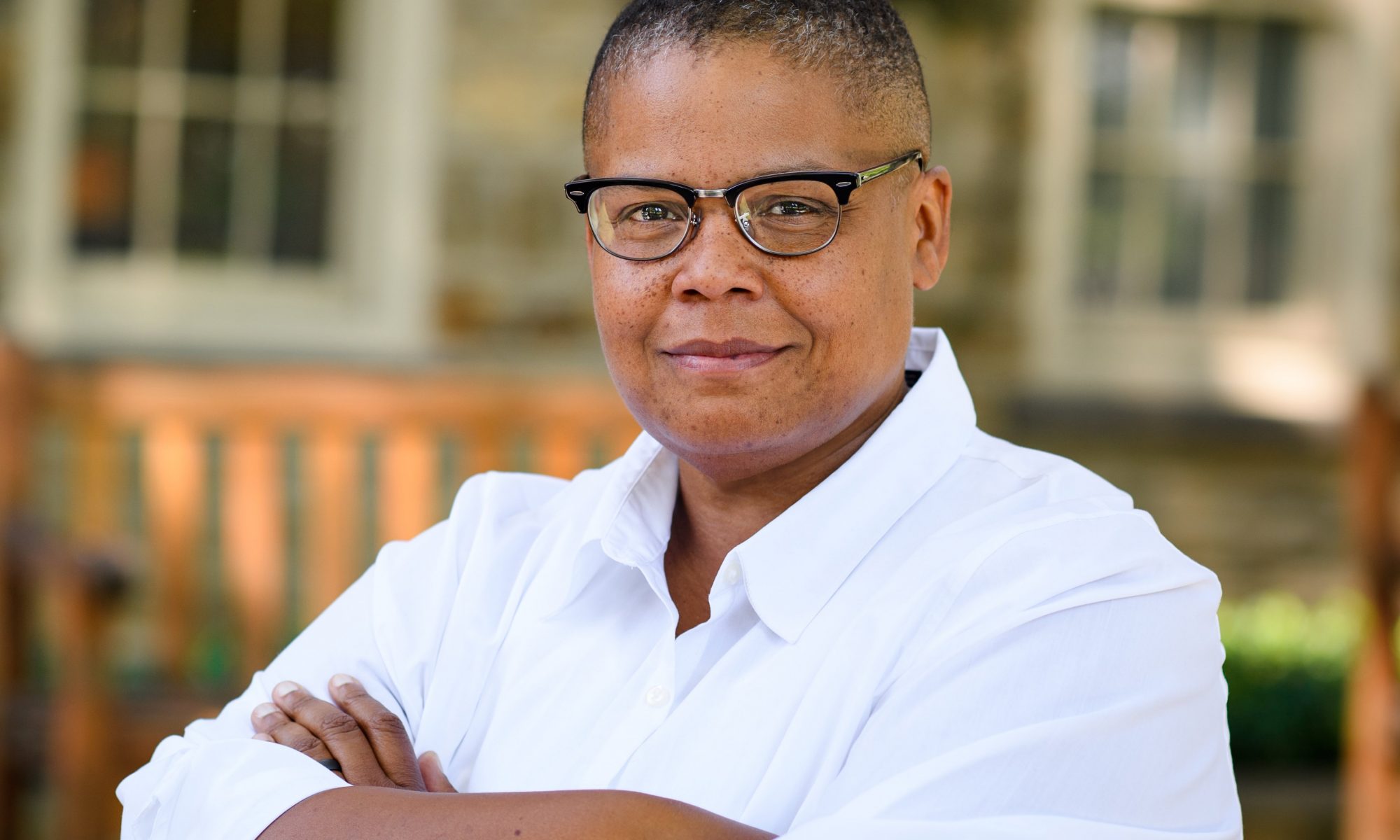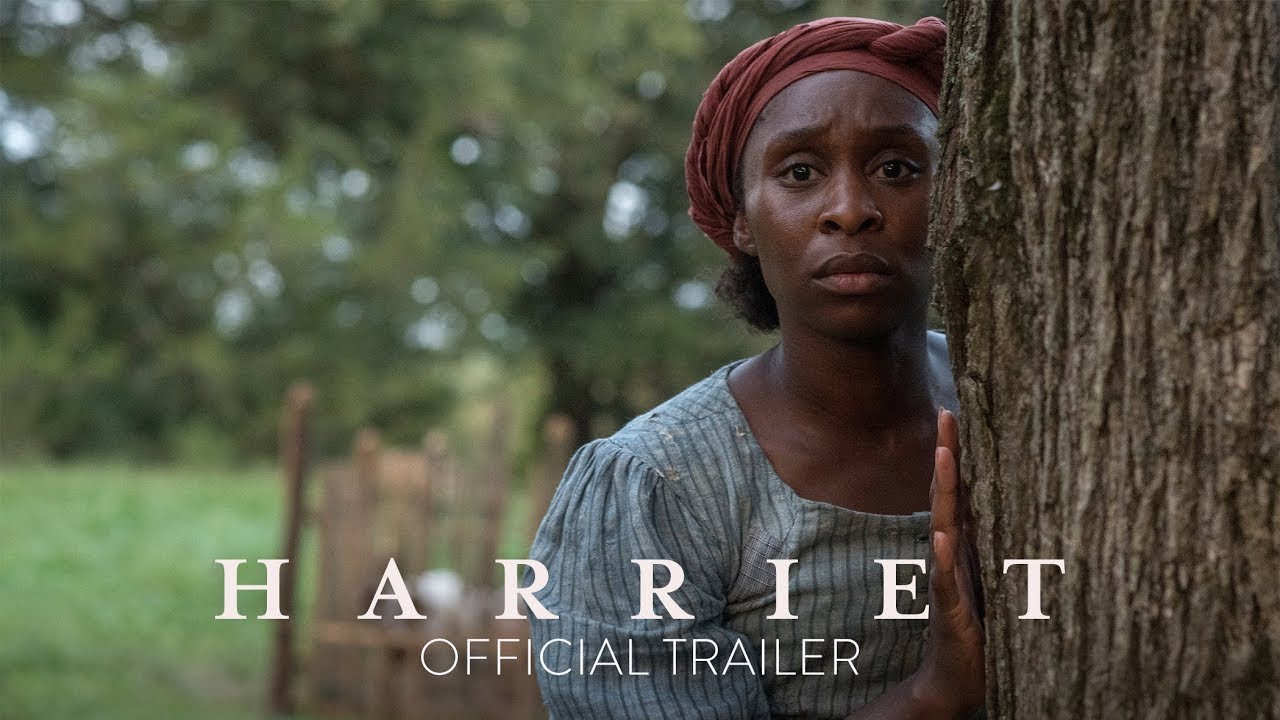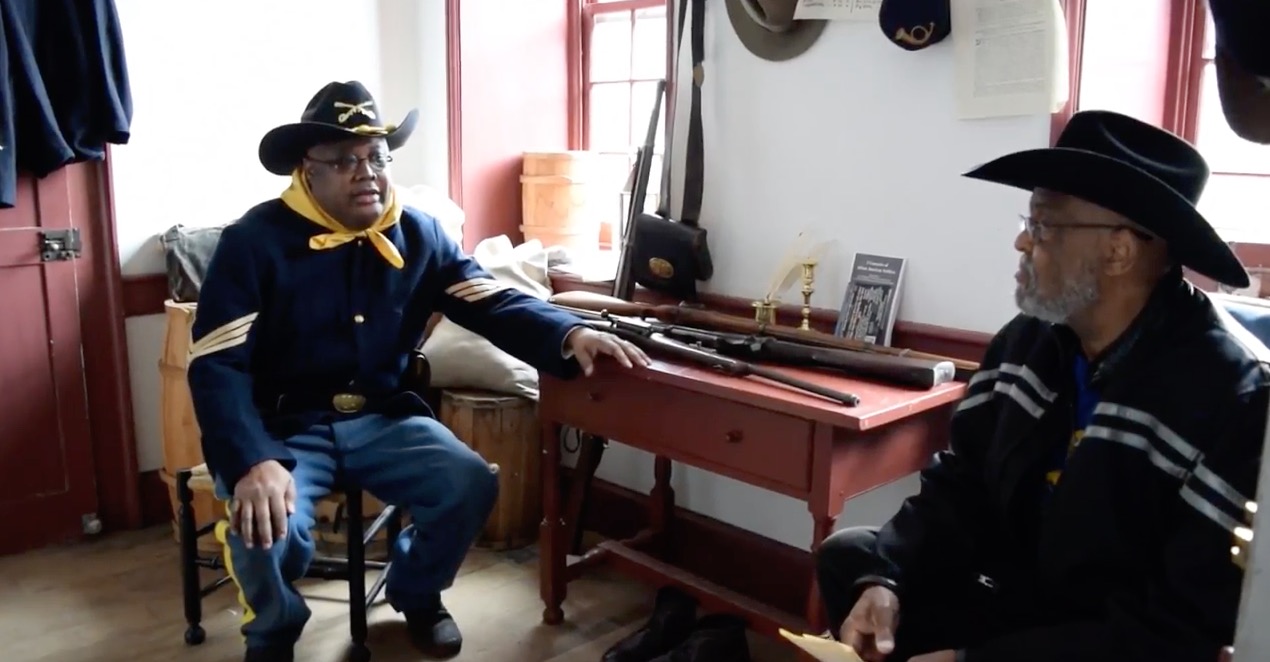Free speech under heavy attack in Georgia via both legal and governmental actions. But not only Georgia – in hundreds of actions all around the country.
The awesome video work of Ari Lopez Wei
Ari Lopez Wei is The Wei’s photographer, videographer and Media Manager. He’s also a living historian who educates people about what life was like for colored and black soldiers in the Revolutionary and Civil Wars and WWI.
You can see Ari’s fotos and some video shorts on Instagram and his blog. If you want to know more about the header image on this page, here’s the full post where he reflects on birthdays, and the day it was taken.
Fascinating, disturbing and important truths about the coronavirus’ impact on Black America
Fascinating, disturbing and important truths about the coronavirus' impact on Black America
The movie Harriet hits theaters November 1
Harriet, the story of Harriet Tubman, in theatres Nov 1. Can't want to be inspired! #p2
‘Searing’ eyewitness account found chronicling the destruction of Black Wall Street and the Tulsa massacre
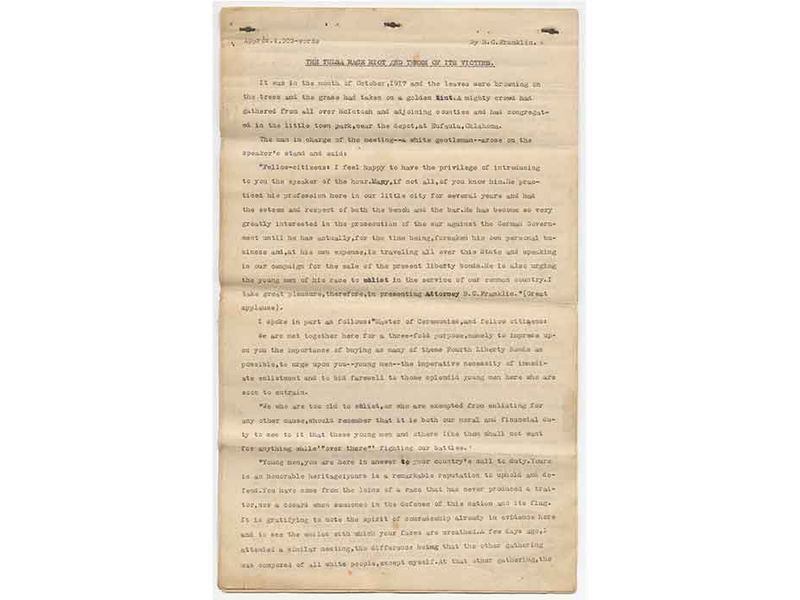
The grandson of a survivor of the Tulsa massacre is a senior program manager at the National Museum of African American History and Culture, where now resides the manuscript detailing the Tulsa, Oklahoma massacre and its impact on Black Wall Street residents. It is a first person account written by attorney Buck Colbert Franklin (1879-1960), who survived the massacre although his law practice was burned to the ground.“I could see planes circling in mid-air. They grew in number and hummed, darted and dipped low. I could hear something like hail falling upon the top of my office building. Down East Archer, I saw the old Mid-Way hotel on fire, burning from its top, and then another and another and another building began to burn from their top,” he wrote.
The 6th USCT at Trenton Barrack’s 3 Centuries of Black Soldiers 2018 event
Bernie Sanders will hold Town Hall on inequality with Elizabeth Warren & Michael Moore
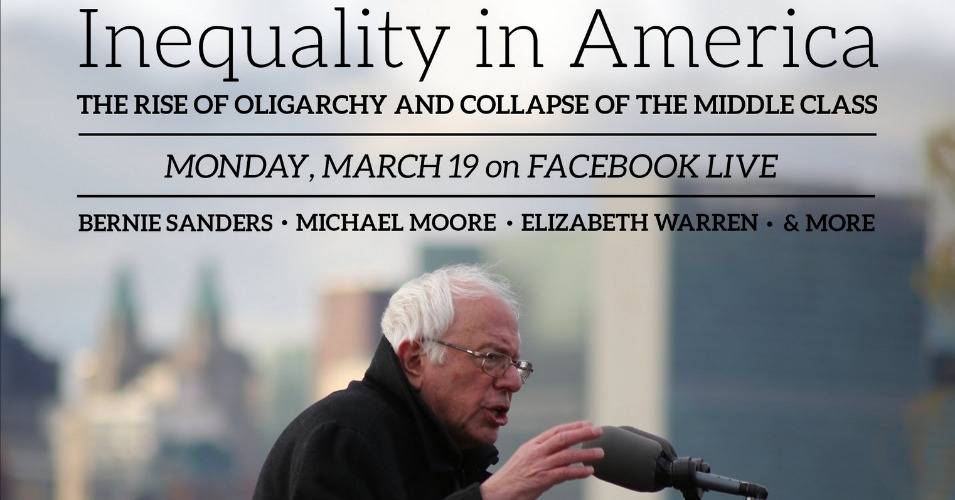
Sen. Bernie Sanders (I-Vt.) announced Thursday that on March 19 he will host Inequality in America: A National Town Hall on Facebook Live focused on inequality in the United States in partnership with The Guardian, NowThis, The Young Turks and Act.tv.
Sanders, along with filmmaker Michel Moore, Sen. Elizabeth Warren, economist Darrick Hamilton and other experts, will discuss poverty in America, the 40-year decline of the middle class, the growing power of corporate interests and how we an economy that works for all Americans.
“The issue of oligarchy and wealth and income inequality is the great moral issue of our time, it is the great economic issue of our time and it is the great political issue of our time, yet it gets very little coverage from the corporate media,” Sanders said. “I am excited to build on the success of our Medicare for All town hall and go outside the traditional media to talk about who owns America, why the middle class is declining, extreme poverty and how we create an economy that works for everybody, not just the 1 percent.”
The event, titled “Inequality in America: The Rise of Oligarchy and Collapse of the Middle Class,” will be held in front of a live audience at the Capitol Visitor Center’s Congressional Auditorium in Washington from 7:00 to 8:20 p.m. and live streamed across the partners’ social media channels.
“The political establishment has completely turned away from the middle class and abandoned the American blue collar workers in favor of the wealthy elite,” said TYT host Ana Kasparian. “Tax cuts are only helping the top one percent and have become corporations’ best and most loyal friend . Our government needs to create opportunity for all people and it’s imperative that our elected officials make sure wages increase with the productivity of this country. I applaud Sen. Sanders’ work in making this the issue of our time. I look forward to working with Michael Moore, Sen. Elizabeth Warren, Darrick Hamilton and the many other esteemed guests to advance the conversation and create change.”
John Mulholland, Guardian US editor said: “The Guardian strives to illuminate the most pressing and underreported issues facing America today. Widening levels of inequality are of huge concern to our American readers. We’re pleased to be involved in this event, helping to amplify one of the most endemic injustices in our society.”
“We need a government that works for all of us, not only the 1 percent. Likewise we are proud to partner in this town hall and amplify such a vital issue. Another world is possible, but we need a better media to make it,” said Harry Waisbren, co-founder of Act.tv.
Guests interested in attending in person can find more information here.
PANELIST BIOS
Elizabeth Warren, Senator from Massachusetts
Elizabeth Warren has made her life’s work the fight for middle class families. She is recognized as one of the nation’s top experts on bankruptcy and the financial pressures facing middle class families, and the Boston Globe has called her “the plainspoken voice of people getting crushed by so many predatory lenders and under regulated banks.”
Michael Moore, filmmaker and author
Michael Moore is an Academy-Award winning documentary filmmaker, activist, and author. Among many issues his work has examined globalization, gun ownership, health care, and domestic and foreign policy.
Darrick Hamilton, Professor of Economics and Urban Policy, The New School, New York City
Professor Darrick Hamilton teaches economic and urban policy at the New School in New York. Both his academic work and activism is aimed at promoting greater economic, political, and social inclusion. His work examines inequality and identity, racism, and socioeconomic outcomes.
Catherine Coleman, Flowers, founder, Alabama Center for Rural Enterprise
Ms. Catherine Coleman Flowers is the founder of the Alabama Center for Rural Enterprise Community Development Corporation. Ms. Flowers has called attention to the lack of environmental and climate justice in poor rural communities, including exposing how some communities live surrounded by raw open sewage. Last year she invited the UN’s Special Rapporteur on Extreme Poverty to Alabama, and he characterized what he saw as “uncommon in the first world.”
Cindy Estrada, Vice President of the United Auto Workers Union
Cindy Estrada is a longtime union organizer and social activist. She was first elected as vice president in 2010 and is the first Latina elected to serve as an International officer. Cindy developed a passion for the labor movement while listening to her grandparents and other family members talk about their experiences working on farms and inside the factories of Detroit. Their stories were the first of many that have guided Estrada in her dedication to empower workers and show them they deserve a seat at the table to raise and resolve workplace problems and improve their working conditions.
Professor Gordon Lafer, Political Scientist, University of Oregon
Dr. Gordon Lafer, a political economist, is a Professor at the University of Oregon’s Labor Education and Research Center and a Research Associate with the Economic Policy Institute. He has spent many years working as a union organizer and has seen how people have been mistreated or ripped off by their employers. His most recent book is The One Percent Solution: How Corporations Are Remaking America One State at a Time (Cornell University Press, 2017).
Three big lies the UN spread in 2017 that stoked hatred of Israel and Jews
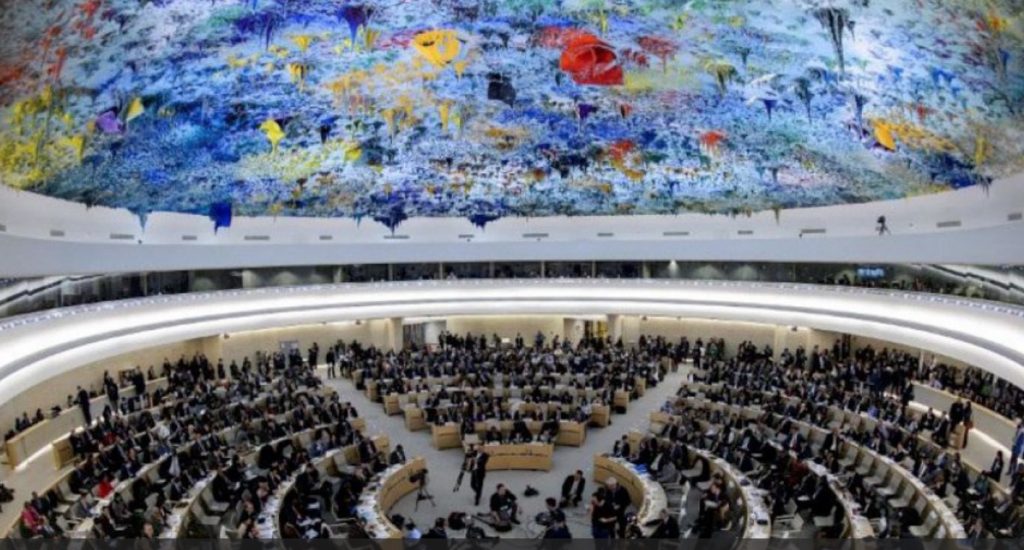
Here are three examples of lies the United Nations spread about Israel in 2017. The ostensible goal was to provoke hatred of Israel and Jews. But United Nations Watch is on hand, monitoring statements and correcting records in order, “to repel the darkness and light the candle of truth.”
Executive Director Hillel C. Neuer writes about the three lies:
The North: a new collection of interactive multimedia stories of Newark that “must be told”
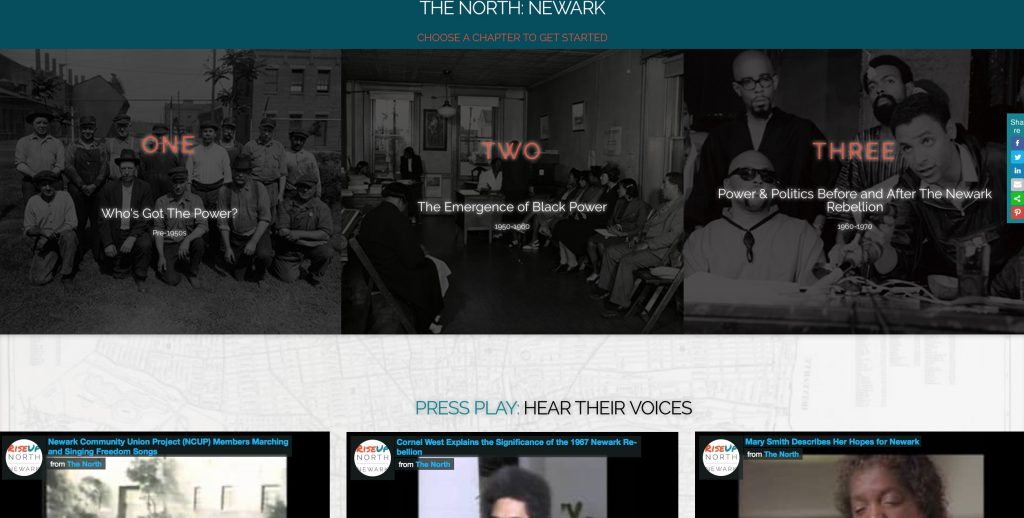 Author of Unfinished Agenda: Urban Politics in the Era of Black Power Dr. Junius Williams introduces The North multimedia storytelling project with these words:
Author of Unfinished Agenda: Urban Politics in the Era of Black Power Dr. Junius Williams introduces The North multimedia storytelling project with these words:
THESE STORIES MUST BE TOLD
Sometime ago, those of us who entered political movements for change walked on our first picket line or marched in our first demonstration. At some point we got hooked on concepts like “Freedom”, “Direct Action” and “Resistance” to get rid of Jim Crow racism. Eventually we came to learn how to spend time in jail, survive police and vigilante violence; to organize poor and working class black people; to extract perks and building blocks from federal programs and build coalitions among unpredictable community groups; to fight city hall; to negotiate agreements that produced opportunities and skill development for community development; and to manage campaigns to elect black politicians.
But then one day we looked around and realized that many of our friends (and enemies) who made that journey, or similar journeys, were no longer with us….to laugh with, relive old conquests, or just tell lies. Too many have moved to places unknown, gotten sick, or passed on to the next life.
So many of our collective stories go untold.
These stories must be told, and hence the evolution of this project entitled, The North: Civil Rights and Beyond in Urban America.
Why an American in England cried in the rain next to a statue of Abraham Lincoln
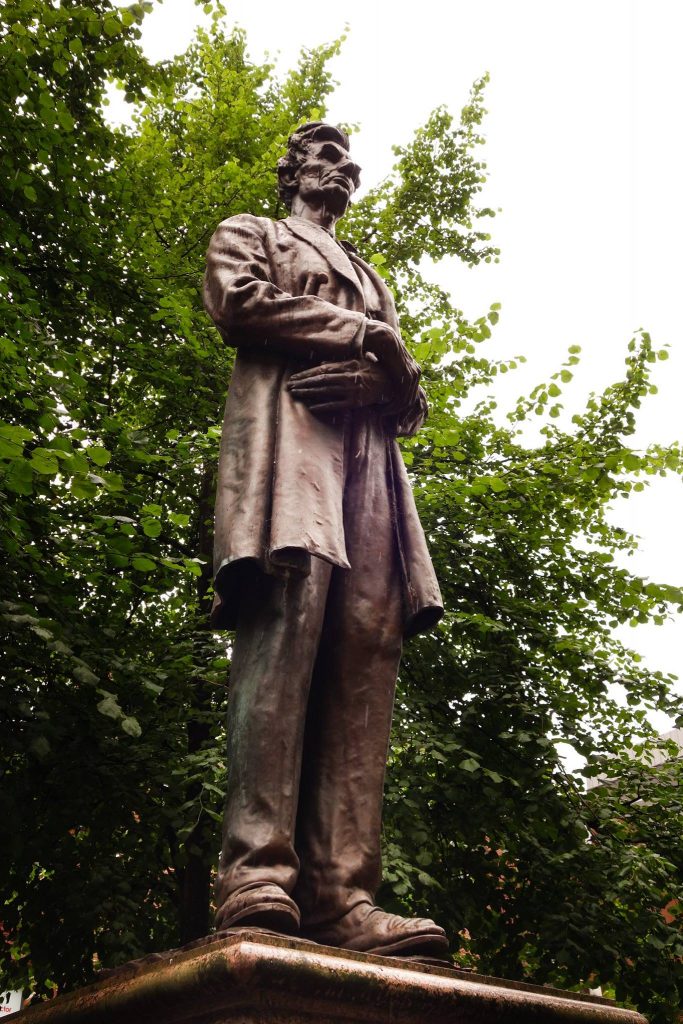
Lily Seville posted this story on Facebook August 18 and made it publicly available so it can be shared.
I haven’t told any stories from England since I got home but it seems like maybe we could all use a good story about a civil war statue, a good story about an American President, and a good story about the power of the common people against the rich and powerful, so I’m going to start with this one. It’s probably for the best that you’re reading this here because I haven’t managed to tell this story in person without crying.
I was in Manchester with a bit of time to spare on a cool, sometimes rainy morning that reminded me of home. Since I had a minute I turned on Pokemon Go on the off chance that there would be a Mr. Mime in range. As luck would have it there was one only two blocks away from my intended destination! The game led me to a small square and as I approached I could’ve sworn that it had an enormous statue of Abraham Lincoln right in the middle of it. Much to my dismay the closer I got, the more it looked like Lincoln. When I was close enough to read the inscription I learned that it was in fact, a statue of Lincoln. What was a statue of Lincoln doing in a lonely square in Northern England?!
Then it got weirder.
There was a large blue sticker that was somewhat haphazardly stuck onto the base of the statue that said something along the lines of “talking statues of Manchester” and had a QR code with no further explanation. There was no question, I had to know what that QR code said! I immediately installed a QR scanner and no sooner had I clicked the shutter button then my phone rang. That was weird and more than a little creepy, but if they say one thing about me when I’ve gone it will be that I never passed on an adventure.
I answered the phone.
There was no preamble, no explanation, just a man’s voice saying “to the working men of Manchester” he then continued in beautiful, archaic prose to praise the workers of Manchester and thank them for their courage and sacrifice. It seemed to be a letter and when it came to an end it was signed “Abraham Lincoln”. When he had finished uttering his name President Lincoln hung up on me. It was a tantalizing letter to a child of Lincoln’s far future standing alone in a rainy square, 4,500 miles away from home. President Lincoln did not bother to list the brave acts or to sum up the sacrifice. Why would he? The people of Manchester knew what they had done.
Luckily, after the phone call ended a screen popped up offering links to learn more. I stood in the drizzle, read an amazing story and wondered why I had never heard it before.
As you probably know during the Civil War the North imposed a Naval blockade on the South. The economic hardship that this caused was an important factor in the North’s victory. What I didn’t know was that the blockade also badly hurt the people of Lancashire, England. At that time the mills of Northern England produced the fabric that clothed the world. Seventy five percent of all the cotton grown on Southern plantations was sent to Lancashire where it was spun, dyed, and woven.
A year into the war and the embargo found Northern England in real distress. Sixty percent of its mills were shuttered, thousands of people were without work. The desperate wealthy mill owners started lobbying the British government to send the British Navy to break the blockade and let the cotton through.
Then an amazing thing happened. The workers themselves organized a mass meeting in the Manchester Union Hall to discuss the matter and those working class men, who had the very most to lose, chose to refuse cotton grown by enslaved hands. The blockade held and the men did indeed lose. In one town alone only five out of thirty-nine mills continued to operate. People went without fuel for heat, there was wide spread starvation, families lost their homes. And still–an ocean and a world away from a war in a place they had never seen–the people of Manchester chose to live and die by their values. They would not support slavery.
When the war ended that letter came from President Lincoln and it was followed shortly after by ships loaded with food and supplies for the people of Lancashire from the people of America, in gratitude.
And that is how I ended up crying in the rain 4,500 miles from home, in a square named for Lincoln in a country that he never set foot in.
I also caught my Mr. Mime.
If you are interested in reading the letter you can do so here.
If you want to read more about the history you can do so here and here.
I have made this post public so that it can be easily shared if you know someone who could use a hopeful story too ~ Lily Seville
Ed note: This story came to me via Han Broekman. Thanks for the beautiful share, Han.
Obama’s entire White House website, including data and Español/Spanish now live at the Obama Library site

All factual information from the Obama presidency is not lost! The President Obama White House website, including its Spanish language pages and its data catalog all remain publicly accessible at the ObamaWhiteHouse.gov website. Even the Obama White House social media feeds have been archived there.
Creation of this resource is another huge reason to thank President Obama: as of 23 January 2017, the incoming administration has already removed both climate change data and all Spanish language information. Pres. Obama’s team tells why he created the archive and what you’ll find there:
In January 2017, the White House website was archived as a way to preserve the online presence of the administration of President Barack Obama. Additionally, the websites for Mrs. Obama’s Let’s Move! Initiative, the We The People Petitions, and the White House Data Catalog (open.whitehouse.gov) were also preserved. These websites are historical material, “frozen in time.” They are no longer updated and links to external websites and some internal pages will not work.
These archived websites are an excellent resource for photographs, speeches, press releases, digital data, and other public domain records of the Obama Presidency from 2009–2017.
The official files making up the websites are archived in NARA’s Electronic Records Archives (ERA), however the website interface and functionality is preserved for easy use by the public through this portal.
Trevor Noah talks about his book on growing up in apartheid South Africa and inviting Tomi Lahren to The Daily Show

Trevor Noah speaks on The Breakfast Club about his autobiographical book on growing up knowing his birth – as a biracial child – was a crime in apartheid South Africa … a place where his mother had to dress as his nanny in order to be able to walk down the street with him.
Noah shares his questions and opinions on Donald Trump and speaks about his decision to invite Tomi Lahren to be his guest on The Daily Show. One reason for doing it was to have the chance to be heard by her audience, who otherwise would never learn anything about him.
Noah is a confirmed supporter of women, and women’s rights. He took fans who spoke crudely about Tomi after her show appearance. Noah told them, you can’t do that: you can’t pretend to be a defender of people rights when you turn around and make misogynistic statements about a woman.
The Breakfast Club interview is almost 50 minutes long, but well worth a listen, or a watch.
Exposé: government assistance thief known in the 1970s as “Welfare Queen” was a white career criminal
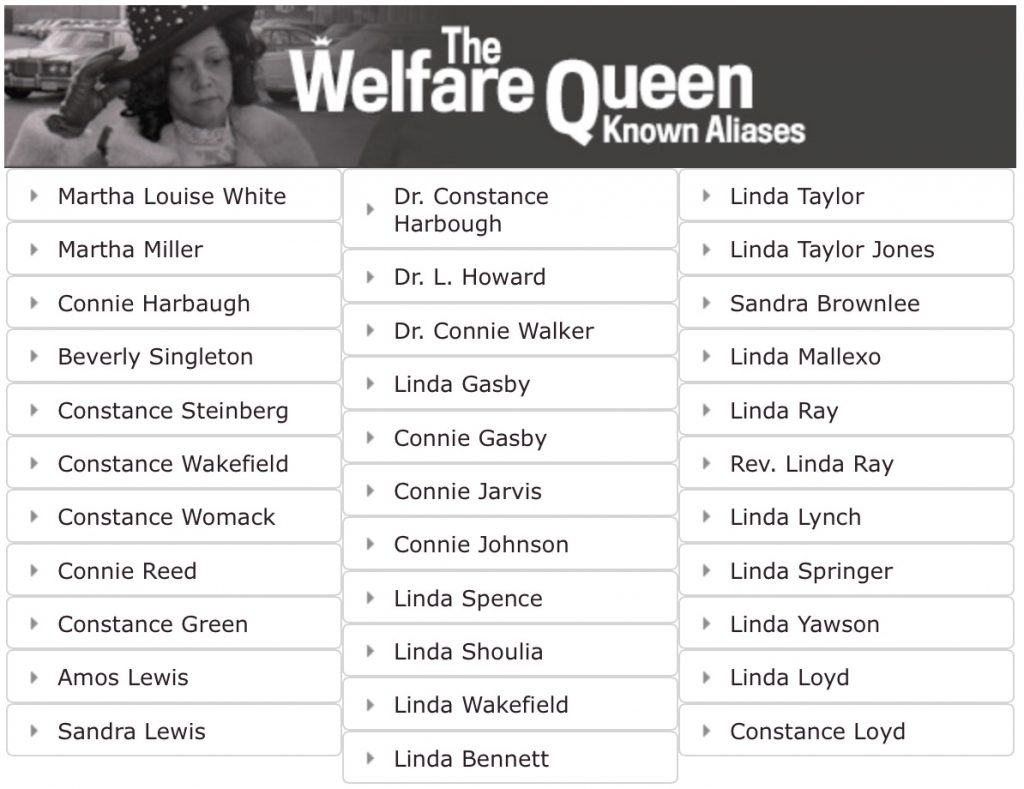
Slate’s Executive Editor Josh Levin created a complex, in-depth multi-media story about the woman who was dubbed the “Welfare Queen” by Ronald Reagan. Mostly described by the media as a black woman, Linda Taylor was actually white and it seems she was also a kidnapper and murderer.
Ronald Reagan loved to tell stories. When he ran for president in 1976, many of Reagan’s anecdotes converged on a single point: The welfare state is broken, and I’m the man to fix it. On the trail, the Republican candidate told a tale about a fancy public housing complex with a gym and a swimming pool. There was also someone in California, he’d explain incredulously, who supported herself with food stamps while learning the art of witchcraft. And in stump speech after stump speech, Reagan regaled his supporters with the story of an Illinois woman whose feats of deception were too amazing to be believed.
“In Chicago, they found a woman who holds the record,” the former California governor declared at a campaign rally in January 1976. “She used 80 names, 30 addresses, 15 telephone numbers to collect food stamps, Social Security, veterans’ benefits for four nonexistent deceased veteran husbands, as well as welfare. Her tax-free cash income alone has been running $150,000 a year.” As soon as he quoted that dollar amount, the crowd gasped.
Four decades later, Reagan’s soliloquies on welfare fraud are often remembered as shameless demagoguery. Many accounts report that Reagan coined the term “welfare queen,” and that this woman in Chicago was a fictional character…
The “Model Minority” Myth victimizes all People of Color – including Asian-Americans
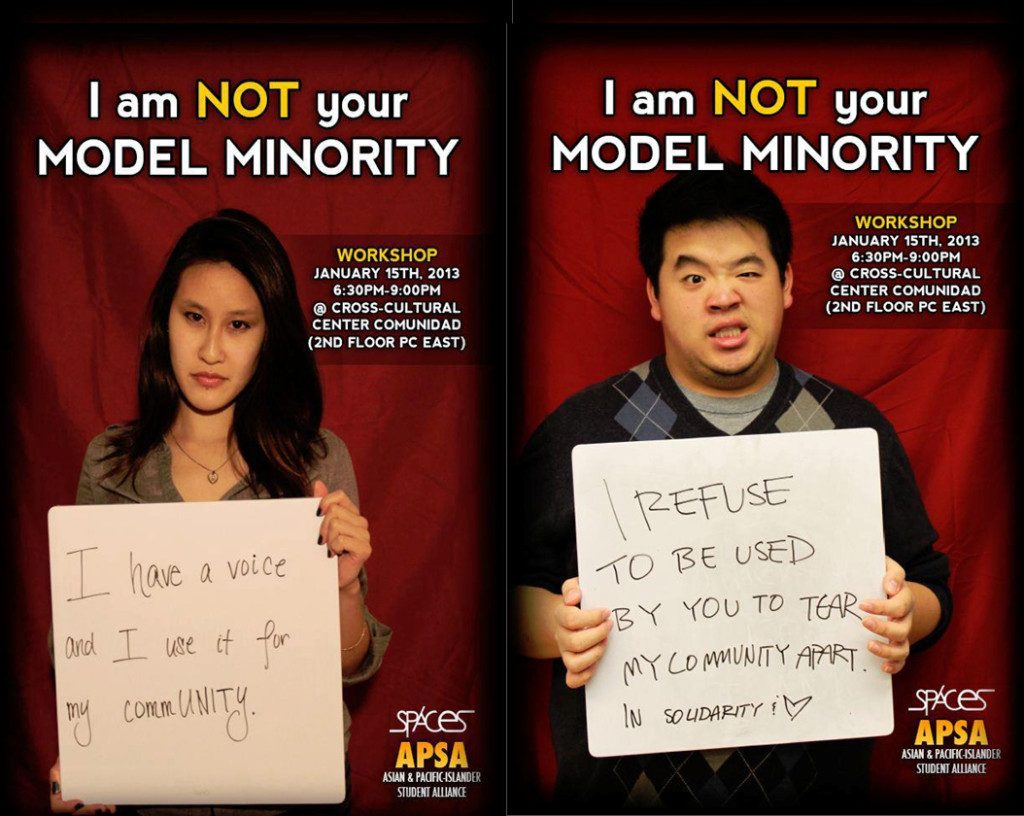
I love Kim Tran’s post about the difficulties of teaching Asian American Studies to students who have swallowed the “Model (Asian) Minority Myth” hook, line and sinker and fervently believe in it entitled, “Asian Americans Aren’t ‘Basically White’.” reappropriate.co pulls this myth apart too:
The Model Minority Myth — which, let us remember, is a myth — was invented for this explicit purpose: its first appearance in the American political zeitgeist was in a 1960’s New York Times Magazine article (“Success story: Japanese American style”) as a reference to Japanese American immigrants who overcame discrimination through alleged “perseverance”, in stated contrast to African Americans who were focused on overcoming discrimination through political action (i.e. the Civil Rights Movement). In other words, the Model Minority Myth has always been a fiction invented by Whiteness and has always been used as a cudgel to denigrate, belittle, or dismiss African American efforts to agitate for political equality, while simultaneously appropriating and limiting the roles that Asian Americans can politically inhabit.
…The Model Minority Myth is an overt and potent tool of white supremacy used to justify structural racism against virtually all communities of colour (including Asian Americans). For many of us who identify as descendants of the politicized Asian American Movement, dismantling the Model Minority Myth has been of tantamount importance.
La historia (buenazamente) ilustrada de la Independencia Colombiana, el 20 de julio
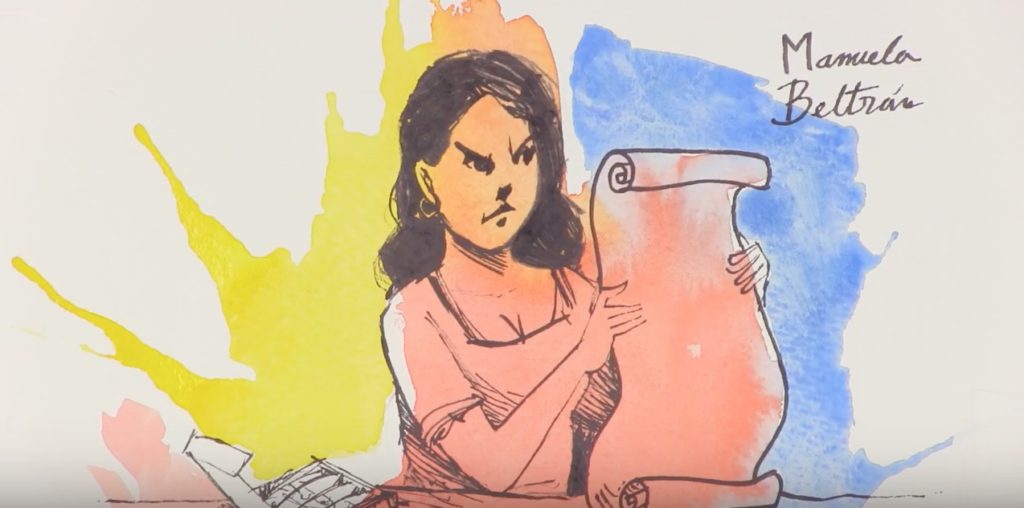
El portal oficial de Colombia comparte este video ilustrando la historia de la Independencia de Colombia, el 20 de julio.

